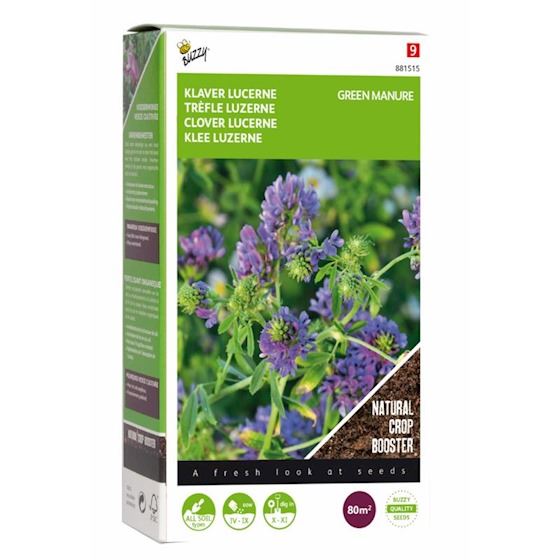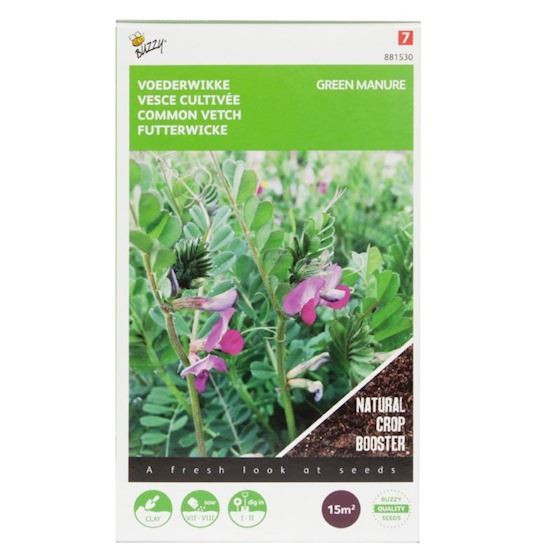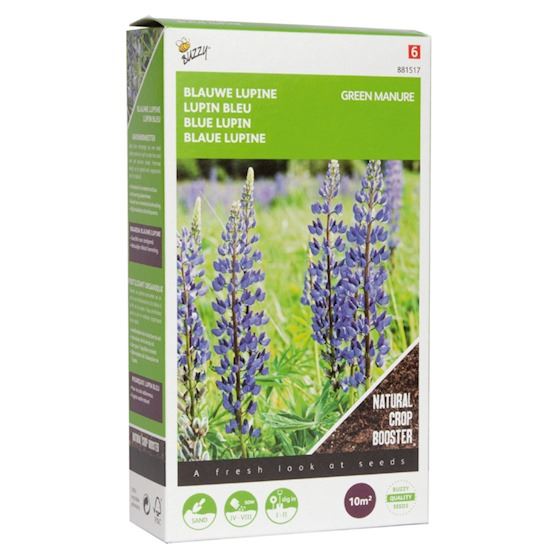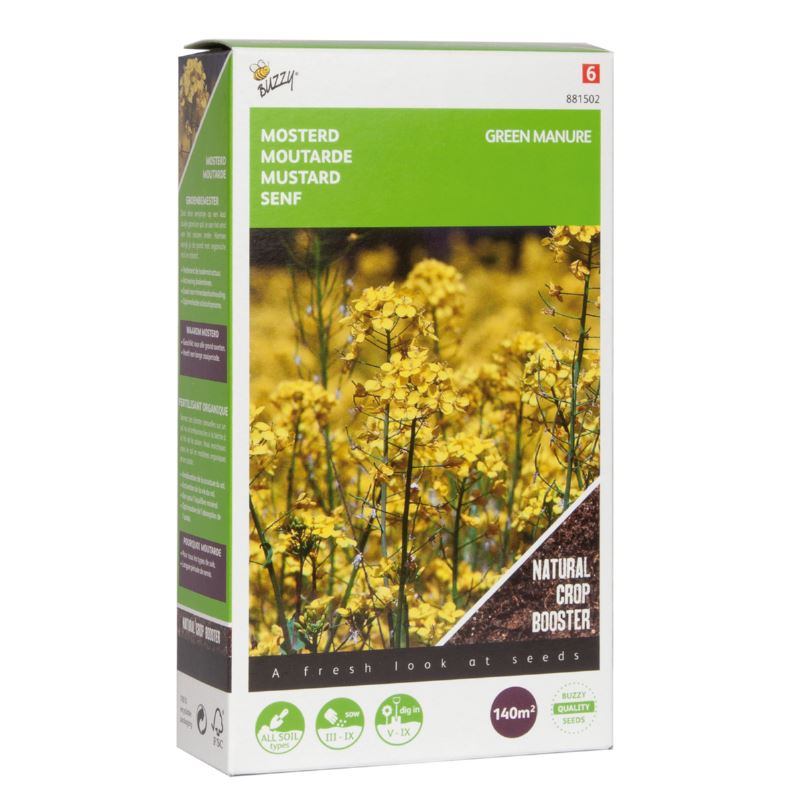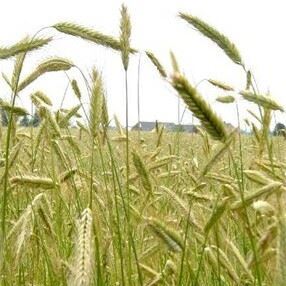
Green manure crops for healthy soil
A green boost
You do not use these plants for consumption but to
give the soil a boost for the next cultivation period. Their positive properties are released by ploughing them in or using them as mulch. Green manure crops are a good alternative to traditional fertilisers such as blood meal and patent potash. During autumn and winter your vegetable garden may be bare but that does not mean you do not have to look after it. It is the perfect time to prepare the vegetable garden for the busy spring. By sowing a green manure crop, you ensure that your soil is healthy and ready for the first spring vegetables. You can also start sowing in the summer on the vacant vegetable garden spots.
We can generally divide the green manure crops into 3 large groups: the leguminous plants, non leguminous plants (crucifers) and grasses. The leguminous plants (white and red clover, vetch...) mainly provide nitrogen while the non-leguminous plants (yellow mustard...) increase the organic matter in the soil. Grasses take up a lot of nutrients but retain them. They also absorb excess water, which is especially useful during wet autumn and winter periods. They also increase the organic matter in the soil.
Each to their own speciality
Each green manure crop has its own speciality. We list some of the advantages:
- Humus: By digging up the crops, organic material is released into the soil. This creates an airy soil, which in turn is positive for soil life. Humus is essential for a healthy soil because it retains water and nutrients. Marigolds and ryegrass are especially suitable for this purpose.
- Nitrogen: leguminous plants take nitrogen from the air and release it into the soil after mowing.
- Nutrients: Green manure crops retain nutrients that would otherwise be washed away by rain. Some are so deeply rooted that they can even break through the hard layers in the soil to get nutrients.
- Protection: These crops cover the soil and protect the soil from negative external influences such as erosion and rain. This creates an airy soil. It also keeps weeds from proliferating. African Marigolds even have a disinfectant effect and keep nematodes out of your (vegetable) garden.
- More fauna: Many of these plants contain nectar that attracts bees, bumblebees and butterflies. In this way you are also doing the endangered bee a favour and ensuring good cross-pollination in your garden. Phacelia is not called the bee's friend for nothing.
- Aesthetic: Green manure crops bring colour to your (vegetable) garden during barren and dull periods.
- Environmentally friendly: Green manure crops allow you to get the best out of your soil in a natural way.
Green manures may have many advantages, but they also have a disadvantage:
We pay a lot of attention to the crop rotation of the vegetable garden, which is no different with green manures.
We have to be especially careful with the cruciferous plants. These should not be sown for four years in soil in which cabbage crops were previously grown. With grasses and Phacelia, you don't have this problem because they don't have any congeners among the vegetable crops. They also provide an extra crop rotation, which only benefits the soil.
So think carefully before you start working with a green manure crop and take into account the type of soil, the sowing time and the crop rotation.

Tip from Marcel
Use a green manure crop in the greenhouse! As soon as the tomatoes are gone, you can sow them in the vacant place. This provides extra crop rotation in the greenhouse.
In the first instance, green manures take the necessary nutrients from the soil so that the plants can grow. So it seems that they take nutrients away from the soil instead of strengthening it. Nothing could be further from the truth, because after the green manures are incorporated into the soil, their nutrients are available again for a new crop.
Popular green manure crops
White mustard
This is a fast grower that covers the entire soil in no time and suppresses weeds. This crop can create a lot of organic matter in a short time. Sowing is possible from mid August until September. Ensure crumbly soil and sow 3 cm deep with a row distance of 10-25 cm.
Phacelia
This one can be used on almost all soil types (except clay). You can recognise this green manure by its beautiful purple-blue flowers. These plants not only provide a healthier soil but also attract many bees to your garden, which in turn provide good pollination. This green manure provides a lot of organic matter which is processed into humus. The plants are not winter hardy. Sowing is possible from April to August. Sow 2 cm deep with a row distance of 15-25 cm.
Vetch
This green manure crop can be used on clay and loamy soils. Its strongest feature is its high nitrogen yield. The seeds are often used in bird feed. These plants are sensitive to frost. Sowing is from July to August.
White clover
Often found in lawns or meadows. This plant is known for its strong nitrogen production. There is therefore no need to add extra (artificial) fertiliser to the soil. Because this plant contains delicious nectar, it is also very attractive to bees and bumblebees. White clover can be used on all kinds of soils. Sowing is from March until July.
Winter rye
The great advantage of winter rye is that it can be sown late in the year. It covers the soil quite quickly, and has good rooting. These plants are winter hardy.
Read more about the vegetable garden? 👇
- The pH value of your kitchen garden
- 4 tips for drawing up a kitchen garden plan
- A guide to the spring kitchen garden
More info? Receive all our gardening tips directly in your mailbox!
We'll only email you handy facts, green advice and our best promotions & discounts. You'll receive it about once a week and you can unsubscribe at any time. No spam, promise 🤞












